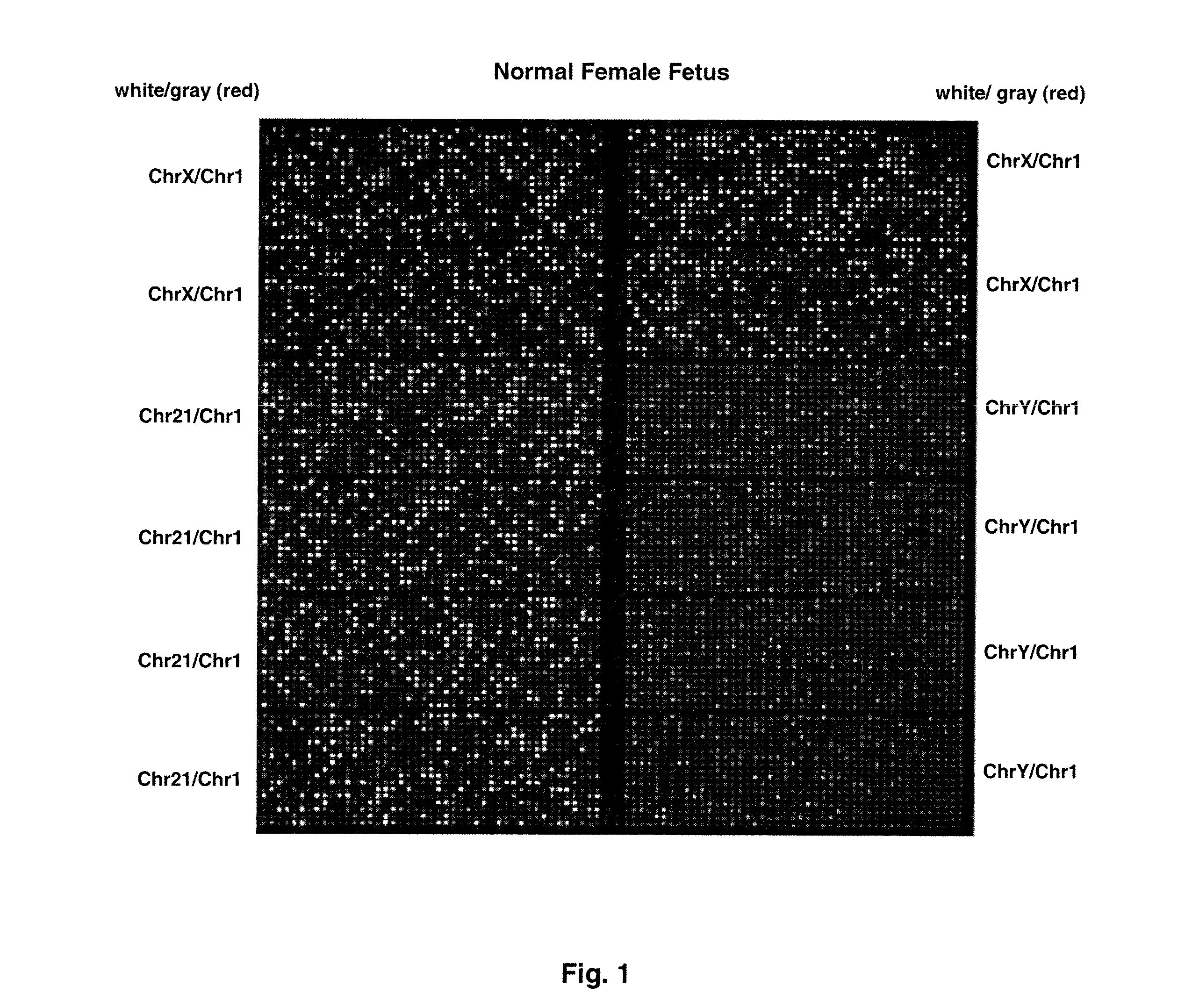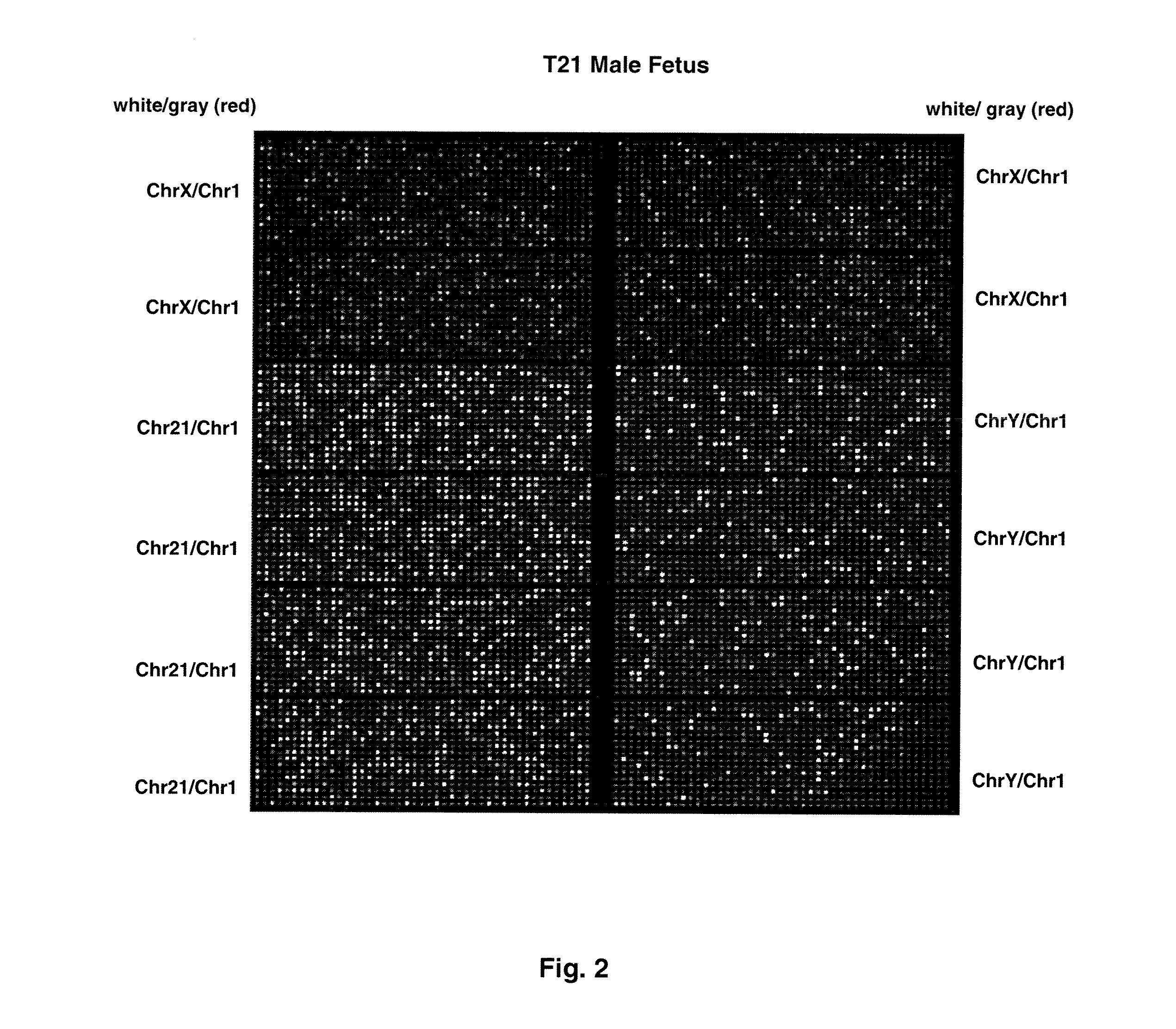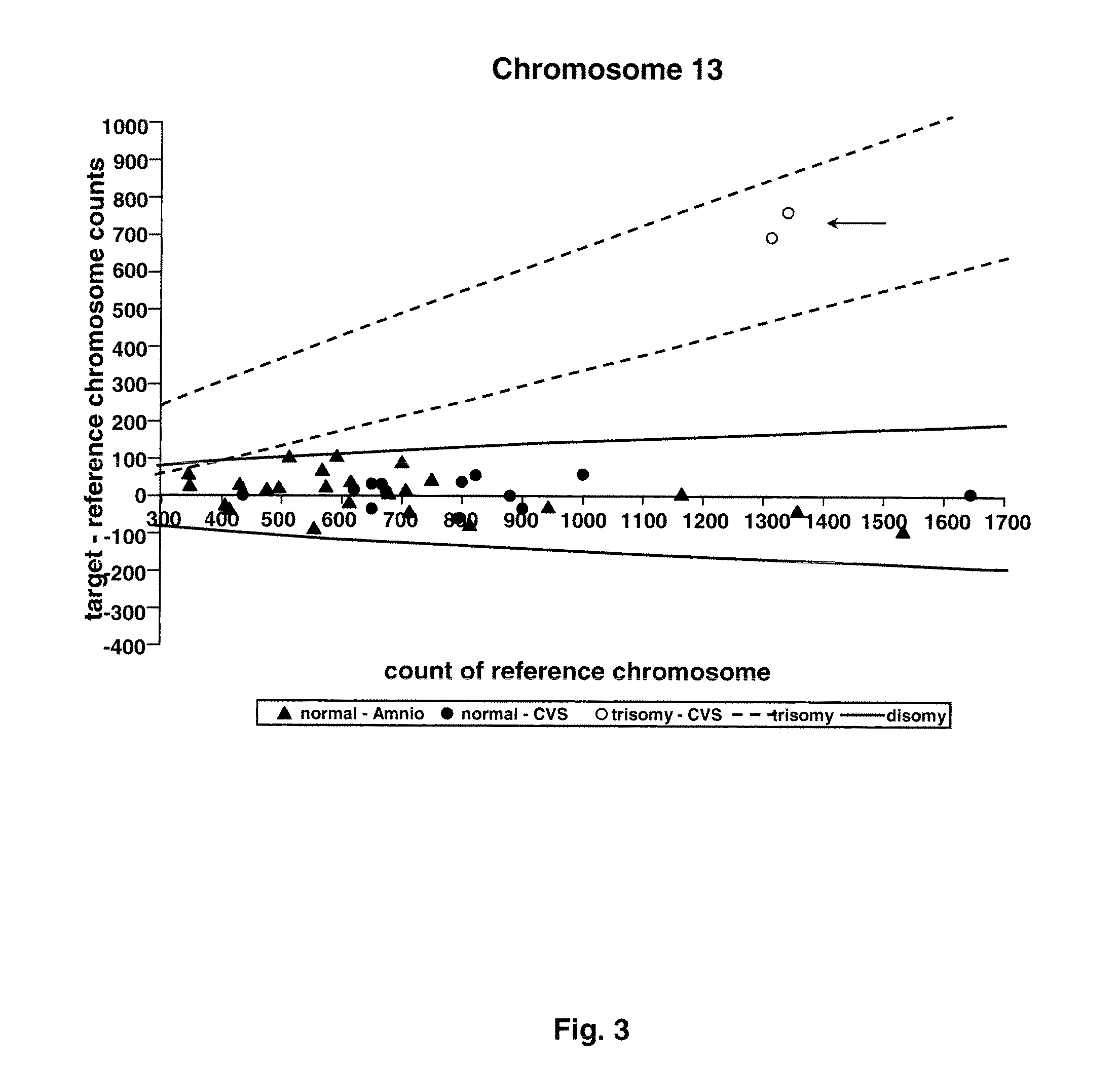Direct Molecular Diagnosis of Fetal Aneuploidy
a fetal aneuploidy and molecular diagnostic technology, applied in biochemistry apparatus and processes, fermentation, organic chemistry, etc., can solve the problems of increased anxiety of expectant parents, difficult to estimate the true incidence of fetal aneuploidy among all pregnancies, and increased maternal morbidity, so as to achieve the effect of more rapid performan
- Summary
- Abstract
- Description
- Claims
- Application Information
AI Technical Summary
Benefits of technology
Problems solved by technology
Method used
Image
Examples
example 1
Microfluidic Digital PCR for Detection of Aneuploidy
[0073]This example demonstrates that digital polymerase chain reaction (PCR) enables rapid, allele independent molecular detection of fetal aneuploidy.
[0074]Twenty-four amniocentesis and 16 chorionic villus samples were used for microfluidic digital PCR analysis. Three thousand and sixty PCR reactions were performed for each of the target chromosomes (X, Y, 13, 18, and 21), and the number of single molecule amplifications was compared to a reference. The difference between target and reference chromosome counts was used to determine the ploidy of each of the target chromosomes.
[0075]FIG. 1 shows sample false-color images of microfluidic digital PCR chips. The chips were 12.765 Digital Array microfluidic chips obtained from Fluidigm, South San Francisco, Calif.). Each chip has 12 panels, which are compartmentalized into 765 nanoliter chambers by micro-mechanical valves. Based on the estimation of DNA concentration with quantitative ...
example 2
Sample Collection and Preparation
[0079]Samples for detection of aneuploidy were obtained from pregnant women having clinically indicated amniocentesis or chorionic villus sampling (CVS).
[0080]In cases of amniocentesis, 1-2 mL from the clinical sample was submitted separately for digital PCR analysis. A total of 40 samples, consisting of 24 amniotic fluid and 16 CVS samples, were processed. One twin pregnancy and 1 triplet pregnancy were enrolled.
[0081]Amniotic fluid was centrifuged at 14,000 rpm. Supernatant was removed and the cell pellet was resuspended in phosphate buffered saline (PBS). Chorionic villi were suspended in PBS. Next, genomic DNA was extracted from amniotic fluid and chorionic villi with QIAamp DNA Blood Mini Kit (Qiagen, Valencia, Calif.) according to the manufacturer's instructions. The QIAamp DNA Blood Mini Kit simplifies isolation of DNA from blood and related body fluids with fast spin-column or vacuum procedures (see flowchart “QIAamp Spin Column Procedure”). ...
example 3
Digital and Microfluidical Digital PCR
[0082]Digital and microfluidical PCR assays were performed as follows.
[0083]Taqman PCR assay was designed to amplify 1 region on each of the following chromosomes: 1, 13,18, 21, X, Y. Chromosome 1 was chosen to be the reference chromosome since it is not associated with any aneuploidy observed in ongoing pregnancies [9]. The assay of chromosome 1 contained a probe labeled with a HEX fluorophore, while the assays for the target chromosomes (13, 18, 21, X, Y) each contained a probe labeled with a FAM fluorophore. The amplicon of each assay was chosen to lie outside of the regions with known copy number variation in healthy individuals [10]. In particular, the amplicons of chromosomes 1, 13, and 18 cover ultraconserved regions [11], which are rarely found to be associated with copy number variation in healthy individuals [10]. The amplicons were all 80-90 bp in length to reduce any amplification bias. The sequences of the primers and probes are lis...
PUM
| Property | Measurement | Unit |
|---|---|---|
| width | aaaaa | aaaaa |
| width | aaaaa | aaaaa |
| time | aaaaa | aaaaa |
Abstract
Description
Claims
Application Information
 Login to View More
Login to View More - R&D
- Intellectual Property
- Life Sciences
- Materials
- Tech Scout
- Unparalleled Data Quality
- Higher Quality Content
- 60% Fewer Hallucinations
Browse by: Latest US Patents, China's latest patents, Technical Efficacy Thesaurus, Application Domain, Technology Topic, Popular Technical Reports.
© 2025 PatSnap. All rights reserved.Legal|Privacy policy|Modern Slavery Act Transparency Statement|Sitemap|About US| Contact US: help@patsnap.com



